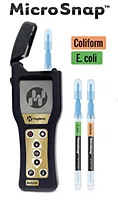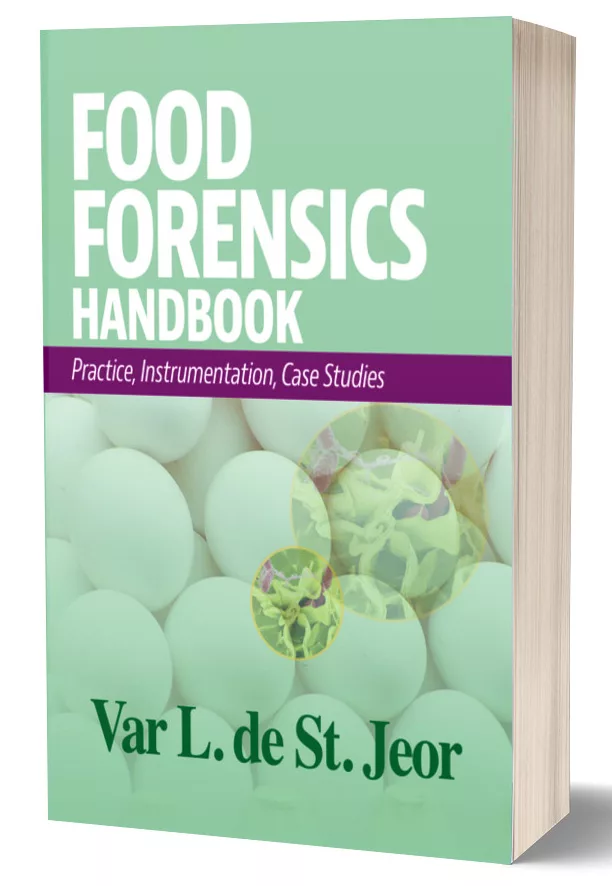Rapid Cleaning Validation Tests

A widely publicized press release in 2010 from the Safe Foods Coalition and the Pew Initiative estimated the cost of foodborne illness to be $152 billion annually. According to Ben Chapman of North Carolina State University, other studies, using a different methodology, show a much higher figure of $1.4 trillion. Either way, it is obvious that foodborne illness is an expensive problem.
Of the top five food safety problems, “poor plant and equipment sanitation” scored 75 percent in another study, clearly correlating good sanitation and food safety.
Traditional methods to determine cleanliness are traditional visual inspection and microbial assays. Over the last couple of decades, adenosine triphosphate (ATP), protein residue and glucose residue swabs have also become established methods.
Richard F. Stier, consulting food scientist and Food Safety Magazine Editorial Advisory Board member, has indicated that traditional methods of determining cleanliness, such as visual inspection and microbial assays, have both value and limitations. Microbiological analysis typically requires two or more days to complete, and a particular analysis such as aerobic plate count (APC) is limited in the types of microorganisms detected. Further, microbiological analyses do not detect organic residue resulting from ineffective cleaning. Visual inspection only allows gross levels of organic residue—those that are visible to the naked eye—to be detected.
Mr. Stier has also suggested the following for hygiene monitoring:
• Ideally, should be in “real time”
• Simple, easy-to-use tools
• Allow for rapid response
• Ease of documentation
A number of products manufactured by Hygiena and available from Weber Scientific nicely meet these criteria.
The protein residue swabs include ALLER-Snap™ and PRO-Clean™. Both detect protein residues left on a surface after cleaning, are read through a colorimetric change without an instrument and have different levels of sensitivity.
With ALLER-Snap, you swab a surface, release the reagent and incubate the device for 15 minutes. If protein residue is present, the reagent will turn purple. The color change provides a semi-quantitative measure of the surface cleanliness. The more contamination is present, the quicker and darker the color change. This swab detects down to 1 µg protein. This extraordinary sensitivity is suitable for allergen monitoring. The cost per test is around $2.00.
PRO-Clean works similarly but does not require an incubation step. A positive will also turn purple with results in under 10 minutes and most changes taking place in under 60 seconds. It detects down to 10 µg protein and costs around $1.50 per test.
SpotCheck™ detects minute amounts of glucose, which is a component of 85 percent of all foods and beverages; since it measures simple sugars, you can detect all major food groups with or without any protein content. Expect to pay $1.30 to $1.70 per test.
ATP bioluminescence technology may offer higher sensitivity, in some instances, to colorimetric swabs. All living organisms contain ATP. In hygiene monitoring applications, ATP bioluminescence systems are generally calibrated using a relative light unit, thresholds for “clean” or “dirty.” Completely clean surfaces—those free of food residue and microorganisms—will not have detectable levels of ATP. Unclean food manufacturing and preparation equipment and utensils will have recoverable amounts of ATP from food residue and perhaps microbial cells. Keep in mind that ATP measures both live and dead organic matter so it measures “clean or dirty.” Detection of microbes, if present, is coincidental.
The Hygiena ATP system uses a luminometer and their all-in-one swab device. Depending upon your particular needs, two luminometers are available: systemSURE PLUS™ or EnSURE™ (which can also measure coliforms using other swab devices); and a choice of two ATP swab devices, SuperSnap™ or Ultrasnap™. The procedure is the same throughout: swab, activate, insert into the instrument and read the results in 15 seconds. And since ATP is instrument-based, it comes with software that walks you through the establishment of your hygiene protocols.
SuperSnap detects to 0.1 femtomoles (the smallest possible detectable amount) of ATP. Ultrasnap detects to 1.0 femtomoles. The EnSURE and systemSURE PLUS luminometers have a sensitivity to 0.1 and 1.0 femtomoles, respectively. An aseptic fill operation, for example, may want the higher detection level compared to a distribution area. Per test, swab costs run around $2.00.
www.weberscientific.com
Looking for quick answers on food safety topics?
Try Ask FSM, our new smart AI search tool.
Ask FSM →








